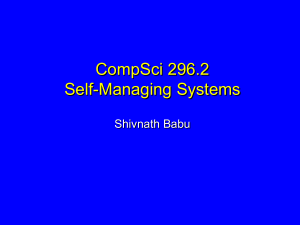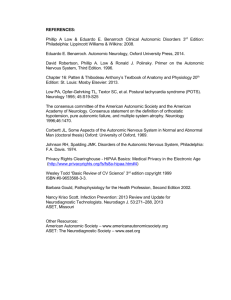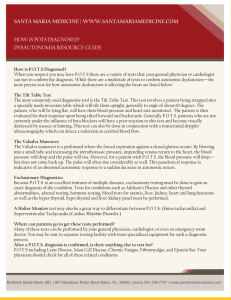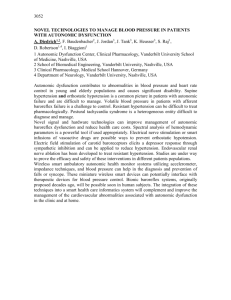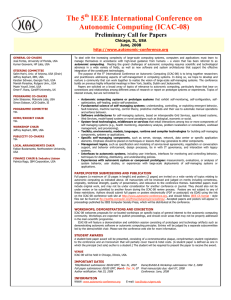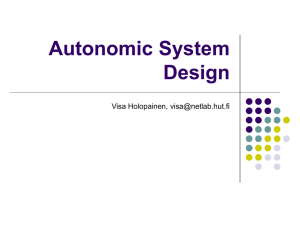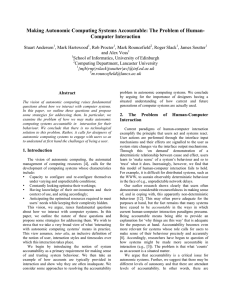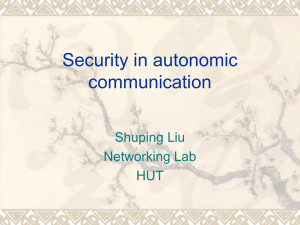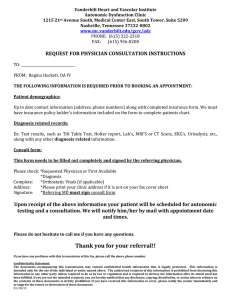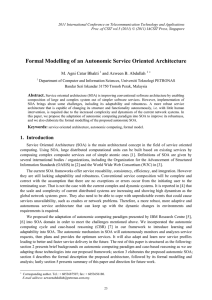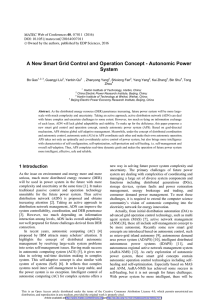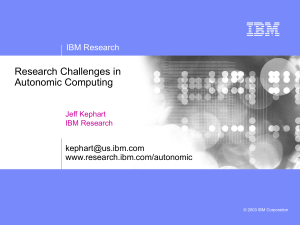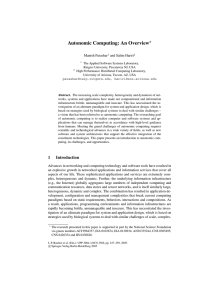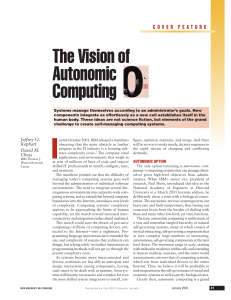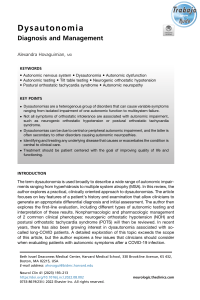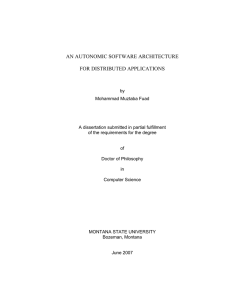Challenges in Adapting Automated Planning for Autonomic Computing
advertisement
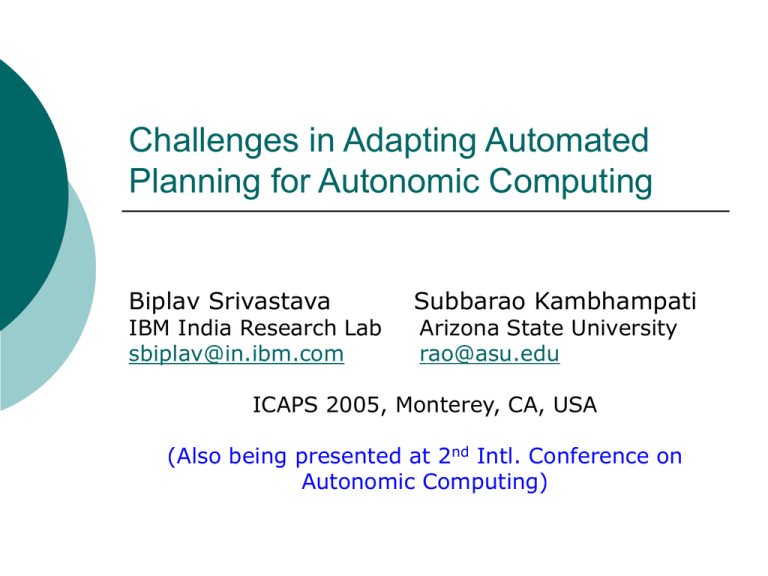
Challenges in Adapting Automated Planning for Autonomic Computing Biplav Srivastava IBM India Research Lab sbiplav@in.ibm.com Subbarao Kambhampati Arizona State University rao@asu.edu ICAPS 2005, Monterey, CA, USA (Also being presented at 2nd Intl. Conference on Autonomic Computing) The Case for Automated Planning in Autonomic Computing Biplav Srivastava Subbarao Kambhampati IBM India Research Lab sbiplav@in.ibm.com Arizona State University rao@asu.edu ICAC 2005, Seattle, USA Presented by: Hemal Khatri Planning in Autonomic Computing (AC) The ‘P’ of the M-A-P-E loop in an Autonomic Manager Planning provides the policy engine for goaltype policies Synthesis, Analysis & Maintenance of plans of action is a vital aspect of Autonomic Computing Autonomic Manager Analyze Given expected system behavior (goals), determine actions to satisfy them Plan Example 1: Taking high-level behavioral specifications from humans, and control the system behavior in such a way as to satisfy the specifications Monitor Knowledge S E Managed Element Execute Change requests (e.g., INSTALL, UPDATE, REMOVE) from administrator in managing software on a machine (Solution Install scenarios) Example 2: Managing/propagating changes caused by installations and component changes in a networked environment Remediation in the presence of failure Information Expected to be Available while Planning in AC Scenarios Planning is <P, I, G, A> P is a set of predicates I and G are initial and goal states drawn from P A is a set of actions, Ai with Aipre (preconditions) Aipost (postconditions) drawn from P Scenario I G S Constraints (initial state) (goal state) A Self-configuring Yes Yes - - Yes Self-healing Yes Yes Yes - Yes Self-optimizing - - - Yes Yes Self-protecting - Yes - Yes Yes (actions) (existing plans) (domain constraints) Comparing Current Status of Automated Planning and the Needs of AC planning Highly scalable planners exist for synthesizing plans of actions. However: They expect complete domain theories They focus on plan generation rather than plan management Early systems in AC: a) CHAMPS: Domain-dependent planner for self-configuration b) ABLE-Planner4J: Domain-independent planning for self-* but expects complete I,G, A. Planning technology is relevant for AC computing, but we also need: Ability to handle incomplete domain theories Focus on plan management rather than just plan synthesis Support mixed initiative continual (re)planning Planning with Incomplete Domain Theories In Autonomic computing (as well as web-service composition, scientific workflow handling), the planner doesn’t have access to complete and correct specification Action specifications may be incomplete Domain theory may be in terms of dependencies The planner can’t always verify correctness ..but can certainly look for errors in a plan Domain theory is partial if correctness cannot be causally explained Domain theory Explanation Modification HTNs provide natural support Explainability: Event vs. State constraints EVENT: If you do a, then do b before c (don’t ask why!) STATE: The condition p is required by a and is given by b State constraints can be compiled to event constraints. But the reverse? Prescriptions AC Practioners Leverage current planning solutions in convenient scenarios – very efficient and will answer qns such as: Planning Researchers In AC, we can at most expect incomplete specification What interactions will occur if a new operation is introduced into the plan What high-level goals will go unsupported if an action is removed Expend time in effect-based modeling Complete specifications make it easy to provide the causal dependency structure of the plan. This in turn helps in plan-management by allowing us to answer questions such as: What interactions will occur if a new operation is introduced into the plan What high-level goals will go unsupported if an action is removed Ordering constraints may be provided without an explanation of why they are needed Some information about incompatibility of actions may be provided Managing such plans poses two technical challenges: Deriving additional dependencies between workflow operations Adapting planning techniques to deal with partial causal information Summary We developed an understanding of the “planning” needs of AC computing Connections with 2 other very close applications—Web Services, and Scientific Workflow management Evaluated the match between existing planning technology and AC computing needs, and identified specific needed extensions Currently focusing on plan synthesis and management with incomplete domain theories (such as are present in AC computing scenarios) Impact will be measured in terms of availability of information sought about the domain and improvement in the quality of plans handled (analyzed/ generated/ managed). Benchmarking will be in the software installation and problem determination scenarios.
